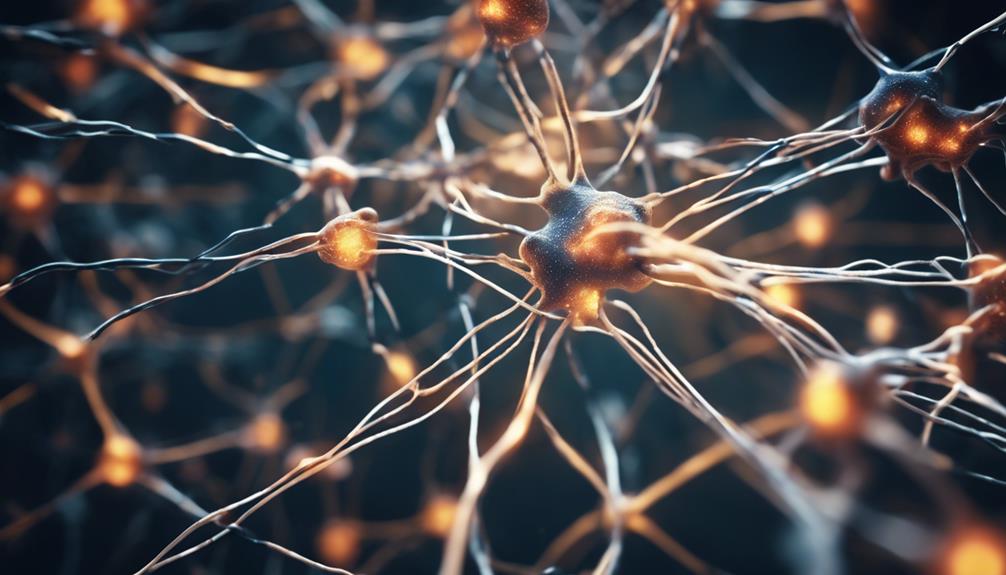
Hypnosis, EFT, and NLP are powerful tools to help overcome the fear of pain. Through these techniques, perceptions can be reframed, emotional distress released, and pain responses managed effectively. By tapping into the subconscious mind, individuals can address root causes of their fear and build resilience. These methods offer transformative ways to alleviate the fear and phobia associated with pain, providing a path towards a more fulfilling life with reduced fear. Embracing these techniques can lead to a newfound sense of empowerment and control over pain-related anxieties. They offer practical solutions for those seeking relief.
Understanding Pain Perception
Pain perception is a complex physiological and psychological process that involves the brain's interpretation of sensory signals from the body. Sensory processing plays an essential role in how pain is experienced and interpreted by individuals.
When the body experiences a painful stimulus, such as touching a hot surface, specialized nerve endings called nociceptors send signals to the brain through the spinal cord. The brain then processes these signals, taking into account various factors like past experiences, emotions, and the context in which the pain is occurring.
This intricate process can vary from person to person, explaining why individuals have different pain tolerances and responses to similar stimuli. Understanding pain perception is essential in addressing and managing pain-related issues effectively.
The Power of Hypnosis

Hypnosis holds a profound ability to tap into the subconscious mind and reframe perceptions of pain.
Through EFT techniques and NLP strategies, individuals can experience relief and empowerment in managing their fear or phobia of pain.
Hypnosis for Pain
Utilizing the transformative technique of hypnosis can provide individuals with a powerful tool to manage and alleviate discomfort effectively. In the domain of pain management, hypnosis has shown promising results in helping individuals cope with various types of pain, including chronic pain, acute pain, and procedural pain.
Through relaxation therapy techniques employed during hypnosis sessions, individuals can experience a deep sense of calm and relaxation, which can help reduce the perception of pain. By guiding individuals into a state of heightened focus and suggestibility, hypnosis can assist in reframing thoughts related to pain, promoting a more positive outlook, and enhancing the individual's ability to manage and alleviate discomfort.
Hypnosis for pain offers a holistic approach that addresses both the physical and psychological aspects of pain management.
EFT Techniques
In exploring the integration of EFT techniques with hypnosis, individuals can tap into a powerful combination that offers profound potential for transforming perceptions and responses to discomfort. EFT, or Emotional Freedom Techniques, provide benefits such as reducing anxiety, releasing negative emotions, and promoting relaxation.
By incorporating EFT into hypnosis sessions, individuals can address deep-seated fears or phobias related to pain more effectively. The use of NLP strategies further enhances this process by helping individuals reframe their thoughts and beliefs surrounding pain.
Through a structured approach that combines EFT benefits with NLP techniques within a hypnosis framework, individuals can experience significant shifts in their perception of pain and develop healthier coping mechanisms. This integrated approach empowers individuals to overcome their fear of pain and live more fulfilling lives.
NLP Benefits
By harnessing the principles of NLP, individuals can tap into the transformative potential of hypnosis in addressing fears and phobias related to pain.
NLP, or Neuro-Linguistic Programming, offers a unique approach that focuses on the mind-body connection, recognizing how thoughts and language impact our emotions and physical sensations.
Through NLP techniques, individuals can reframe their perceptions of pain, allowing for emotional healing by altering the way the brain processes these sensations.
This approach empowers individuals to release from the cycle of fear and discomfort associated with pain, creating a more positive and empowering outlook.
Overcoming Fear With EFT

Addressing fear through Emotional Freedom Techniques (EFT) can be a powerful tool in helping individuals overcome their phobias and anxieties. EFT works by tapping on specific meridian points on the body while focusing on the fear or anxiety, which can help release blocked energy and restore emotional balance. This process is often referred to as 'tapping therapy' and is known for its ability to promote fear release and emotional freedom.
EFT is based on the idea that negative emotions are caused by disturbances in the body's energy system. By tapping on these meridian points, individuals can disrupt the negative thought patterns associated with fear, allowing them to reframe their thoughts and experience a sense of relief. Through consistent practice, individuals can learn to manage their fears and anxieties more effectively, leading to a greater sense of emotional freedom.
NLP Techniques for Pain Phobias

Utilizing Neuro-Linguistic Programming (NLP) techniques can offer effective strategies for individuals struggling with phobias related to pain. NLP provides tools for pain management and emotional healing by addressing the root causes of these phobias.
One technique commonly used in NLP for pain phobias is 'reframing.' This method involves shifting the perception of pain from a negative experience to a neutral or even positive one. By reframing how individuals view pain, they can reduce the fear associated with it, leading to better pain management.
Another NLP technique useful for pain phobias is 'anchoring.' This method involves associating a specific positive emotion or state with a particular stimulus. By creating a positive anchor for pain-related situations, individuals can learn to manage their emotional responses better and alleviate the fear surrounding pain.
Rewiring Neural Pathways

To overcome fear or phobia of pain, rewiring neural pathways is essential.
This process involves making alterations in the brain's pathways through cognitive restructuring techniques.
Neural Rewiring Process
By actively engaging in the neural rewiring process, individuals can effectively restructure their brain's neural pathways to alleviate fear or phobia of pain. Neural reprogramming involves identifying and altering emotional triggers that contribute to the fear response.
Through techniques like hypnosis, EFT, and NLP, individuals can address underlying subconscious beliefs that fuel their pain-related anxieties. Pain tolerance can be increased by rewiring the brain to perceive pain differently, leading to a reduction in fear responses.
This process requires dedication and consistency to create lasting changes in neural pathways. By actively participating in neural rewiring activities, individuals can empower themselves to overcome the grip of pain-related fears and phobias, ultimately improving their quality of life.
Brain Pathway Changes
In the process of rewiring neural pathways to address fear or phobia of pain, individuals undergo profound changes in brain pathways that can greatly impact their perception and response to pain stimuli. Neuroplasticity effects play an important role in this transformation, allowing for the brain to adapt and reorganize itself in response to new experiences and practices.
Through pain management techniques, individuals can actively engage in reshaping their neural pathways to cultivate a healthier relationship with pain. This process involves utilizing a combination of strategies such as mindfulness practices, relaxation techniques, and positive visualization to reframe the brain's response to pain signals.
Cognitive Restructuring Techniques
Cognitive restructuring techniques serve as powerful tools in reshaping neural pathways to transform individuals' responses to pain stimuli. By incorporating cognitive restructuring into healing practices, individuals can effectively reframe their perceptions of pain, leading to a shift in their mind-body connection and ultimately facilitating transformation.
Through these techniques, individuals can challenge and modify their negative thought patterns surrounding pain, fostering a more adaptive and resilient mindset. This process involves identifying and replacing maladaptive beliefs with more constructive and empowering alternatives, thereby promoting a healthier psychological response to pain triggers.
Addressing Root Causes

To effectively address the root causes of fear or phobia of pain, it is essential to delve deeply into the subconscious mind and examine the underlying triggers that contribute to these distressing emotions. Understanding the root causes through exploration and discovering subconscious beliefs can pave the way for healing and transformation.
Here are some key points to contemplate:
- Uncovering past traumas or experiences that may have shaped your perception of pain.
- Identifying any learned behaviors or conditioning from childhood that influence your fear response.
- Recognizing any negative thought patterns or beliefs about pain that are ingrained in your subconscious.
Building Resilience Through Practice

Developing resilience through consistent practice can greatly aid in managing and overcoming the fear or phobia of pain. Resilience building is a gradual process that involves practicing techniques regularly to strengthen one's ability to cope with difficult situations. By consistently engaging in activities that promote mental and emotional strength, individuals can enhance their capacity to face and manage the fear associated with pain.
To build resilience effectively, it is essential to maintain practice consistency. This involves dedicating time each day to engage in resilience-building exercises such as mindfulness meditation, positive affirmations, or relaxation techniques. By incorporating these practices into daily routines, individuals can gradually develop a sense of inner strength and stability that can help them navigate through challenging experiences.
Embracing a Pain-Free Future

In envisioning a pain-free future, individuals can cultivate a sense of hope and empowerment through proactive self-care practices and mindset shifts. Pain management and fear reduction are essential components in this journey towards a more comfortable and fulfilling life.
Here are some practical steps to help you embrace a pain-free future:
- Mindfulness Practices: Engage in mindfulness meditation or deep breathing exercises to help reduce stress and promote relaxation, which can positively impact pain perception.
- Physical Activity: Regular exercise not only improves physical health but also releases endorphins, the body's natural painkillers, and can help in managing chronic pain.
- Healthy Lifestyle Choices: Eating a balanced diet, staying hydrated, and getting adequate rest are fundamental in supporting overall well-being and can contribute to pain management efforts.
Frequently Asked Questions
Can Hypnosis, Eft, and NLP Be Used to Treat Chronic Pain Conditions?
Alternative therapies like hypnosis, EFT, and NLP offer promising avenues for managing chronic pain conditions. By harnessing the power of mind-body techniques, individuals may experience significant pain relief and improved quality of life.
Is There a Specific Age Group That Benefits the Most From These Techniques?
Different age groups may benefit differently from techniques like hypnosis, EFT, and NLP for pain phobia. Adolescents and young adults might respond well due to adaptability, while older adults may benefit from accumulated life experience. Tailoring approaches to specific age groups can enhance effectiveness.
How Long Does It Typically Take to See Results When Using These Methods to Overcome a Fear or Phobia of Pain?
When addressing fears or phobias of pain, the time frame for seeing results varies based on individual factors such as mindset, severity of the fear, and consistency of practice. Success rates can be significant with commitment to the process.
Are There Any Potential Side Effects or Risks Associated With Using Hypnosis, Eft, or NLP for Pain Management?
Exploring the domain of alternative pain management methods demands a thorough understanding of potential risks. Safety measures, including practitioner qualifications and individual suitability assessments, are critical to mitigating any adverse effects that may arise during treatment.
Can These Techniques Be Used in Conjunction With Traditional Medical Treatments for Pain?
Integrative therapy for pain management involves combining conventional medical treatments with complementary approaches like hypnosis, EFT, and NLP. These techniques can be used alongside traditional methods to enhance pain relief and overall well-being for patients.
Conclusion
To summarize, hypnosis, EFT, and NLP offer effective tools for resolving the fear or phobia of pain by rewiring neural pathways, addressing root causes, and building resilience. By embracing these techniques and practices, individuals can work towards a pain-free future.
It's time to take control of your pain perception and break free from the constraints of fear, opening up a world of possibilities for healing and growth. So why wait? Start your journey towards a pain-free life today.
Take the Next Step
Do not be afraid to reach out to me, Mark E Wilkins, to assist you in any issues you might have. Most Hypnotherapy sessions last 2 hours and EFT Sessions are usually handled with one session. Life Coaching is 45 minute session, once a week. Self-Hypnosis is taught in one session, and lasts a lifetime.
To make an appointment, first listen to the Pre-talk and fill out he Complementary Healthcare Provider Disclosure. The use the Contact Form to request an appointment with the Bohol Hypnosis Expert.
Self-help downloads are available. The self-hypnosis program to teach you how to self-hypnotize is here.





